Observation & Experiment
Learning to see - and miss! A lowdown on the first fortnight of Children's Illustration course in Cambridge
CLASS 1 - The moving figure
The excitement of starting our course, finally, after 2 weeks of welcomes, orientations, student society fairs and fresher parties, was palpable as I sat for my first class among other illustrators from around the world - all chatting amongst each other noisily! There was a lot to know, a lot to talk about, a lot to show each other and, (more so for our Chinese friends) the excitement of discovering each other’s work on social media.
The cold grey weather did nothing to dampen my spirits as we walked to a nearby street to sketch outdoors, scattered along the entire street as passers-by gawked. I’d done observational sketching twice before - once during graduation, and more recently during the Riyaaz illustrators’ course. A sense of déjà vu descended as my pen stood poised on the page - ready to capture the incoming stream of people. Quickly, I made one sketch, then another, and then another…
…wait, what IS this?? I do not draw like that!
Okay, don’t panic, deep breath, turn the page, start again! This time, I consciously acknowledged the fear of judgement, reasoned it’s just my personal sketchbook - hopefully the worse it is right now, the more spectacular the end will look (oh, the stories I tell myself!) Unsurprisingly however, the sketches got better. Our tutor Pam came by and helpfully pointed out what I was missing - capturing the character of drawn subjects enough so the viewer can see what I was seeing in the moment. By the end of the day, I was kinda happy with the kind of start I’d had.

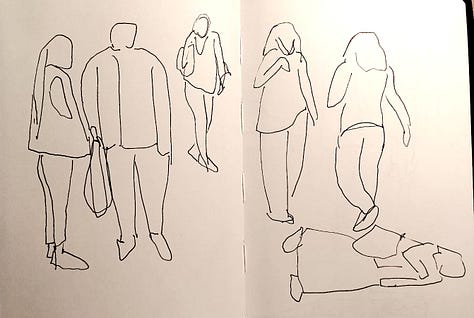
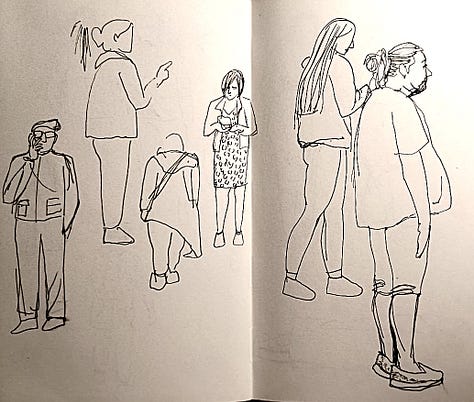
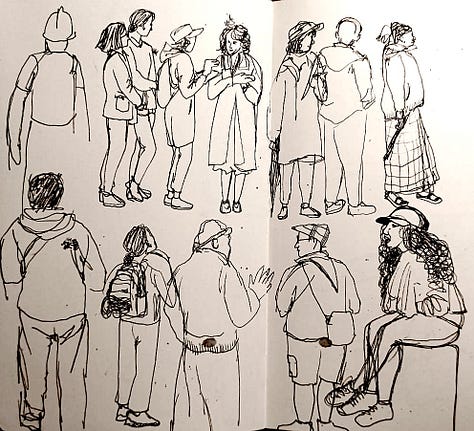
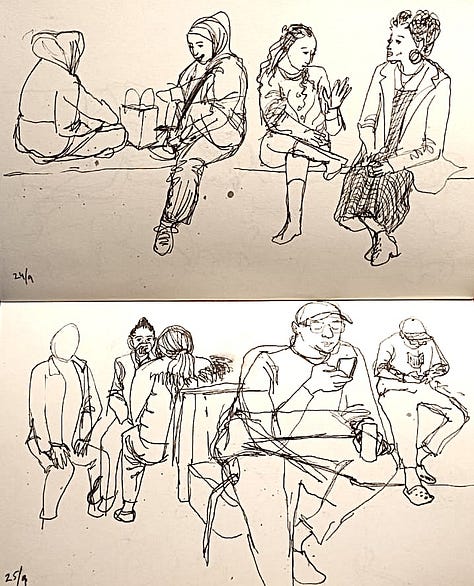

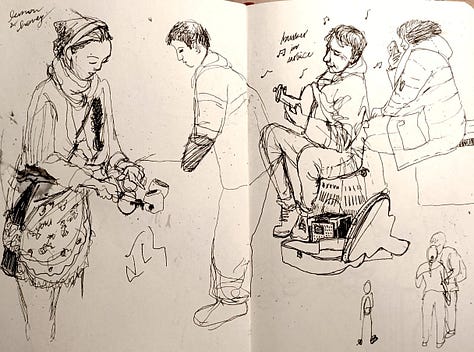
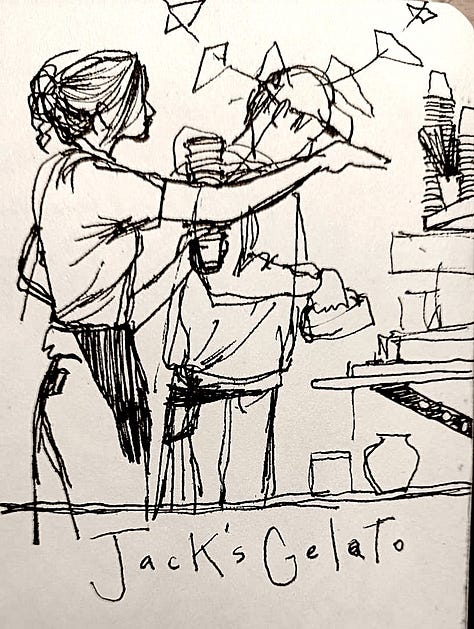

CLASS 2 - Linear Perspective with Alexis Deacon
Perspective drawing is something I’ve never particularly struggled with - my dad is a structural engineer who often makes highly-technical self-explanatory sketches for his clients/crew. But when I bravely volunteered to draw people from a worm’s perspective , I got it all wrong - on the big screen. Ouch!
Good only. For the rest of the day, I ensured I was Jon Snow and knew nothing. My one-point perspective came out well though.
CLASS 3 - Depth, Framing, Composition
I looked forward to this one!
I’ve always been Compositionally-challenged (is that even a phrase?) and have usually picked the most obvious, easiest to draw or whatever frames first came to mind. Then I go to Pinterest and endlessly pore over images that are pure genius. My graphic design background (internally) adds injury to insult! Anyway, a few years ago I became obsessed with Proko’s Draftsmen podcast and discovered it was composition that I needed to work on. But their examples of the ‘greats’ only made it seem it was a pathological skill or ‘talent’ - inaccessible to me.
We made our way to the Cambridge Botanical Gardens to work on thumbnail sketches incorporating interesting framing and composition. But the photographer in me went to munch on grass (Hindi: ghaas charne gaya) it seemed - I felt so inadequate, frozen, unimaginative. Drawing in the pouring rain, cold and hunched under an umbrella didn’t help either - my charcoal sketches progressively began to look as muddled as the ideas in my head.
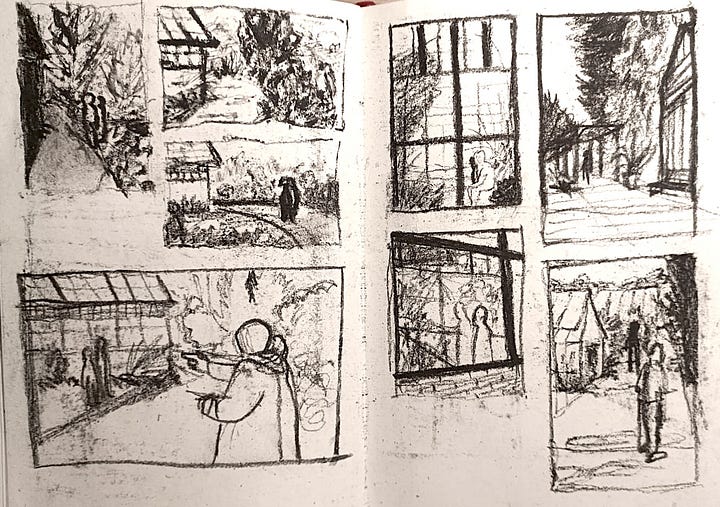
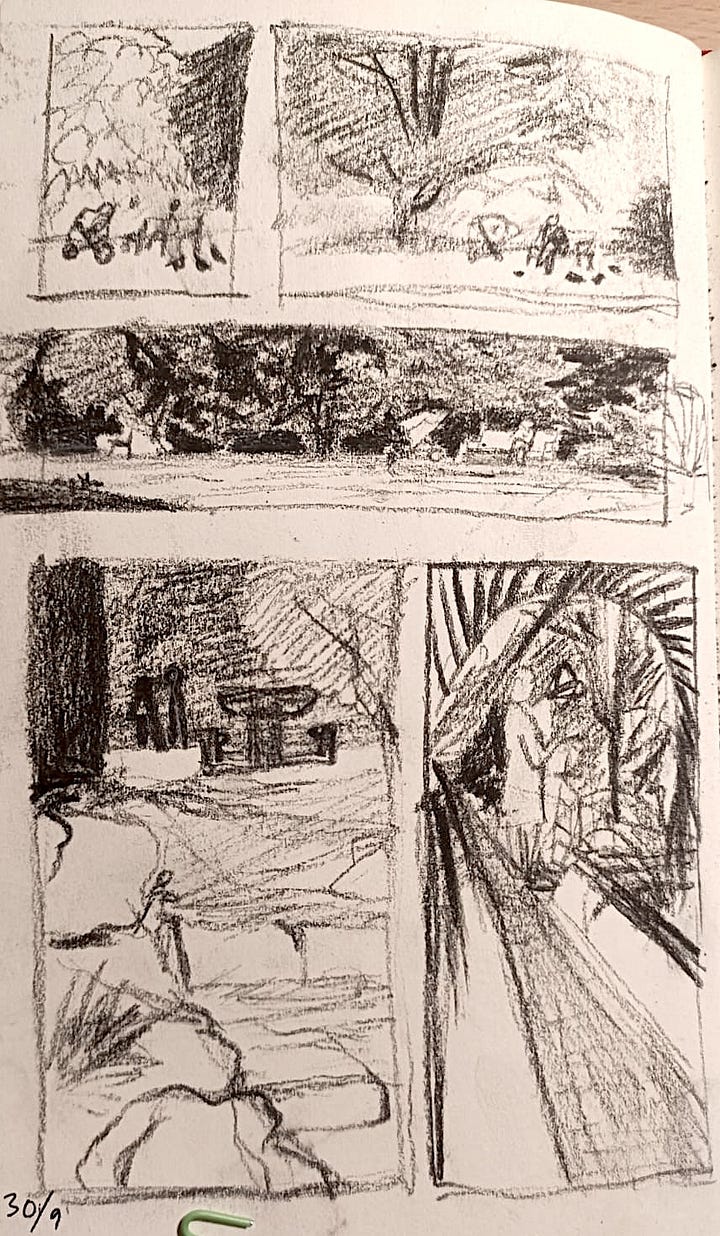
Walking back to uni, I seemed nowhere near the answer to my quest - how are interesting compositions made? It seemed that asymmetry and side points of view are better than head-on ones, and focal points in an image can just be cleverly ‘manipulated’ with foliage or framing elements - and that’s all there is to it. But what about negative forms? The rule of thirds? I was swimming in so much uncertainty that at the end of class, I couldn’t even articulate what I sought to understand.
Then I saw this video and it kinda started coming together. I guess the rest will happen on my sketchbook pages!
CLASS 4 - Tonal Values with Birgitta Sif
The prep for this class reminded me of an exercise from grad school where I made (not kidding!) >950 shades+tints of ultramarine Blue - adding a drop of black/white each time. it was…painful.
Thankfully this time we were only making a 10-stop greyscale from rich Black to bright white. I found most of them as ready-made coloured sheets and made the rest by rolling black ink on white paper.
The exercise was to make an observational collage from these papers in a park. No drawing - just cut the shapes and stick. It was back-breaking but SO SO satisfying. The results from everybody were astounding! Check out Hsihui Lin’s below:

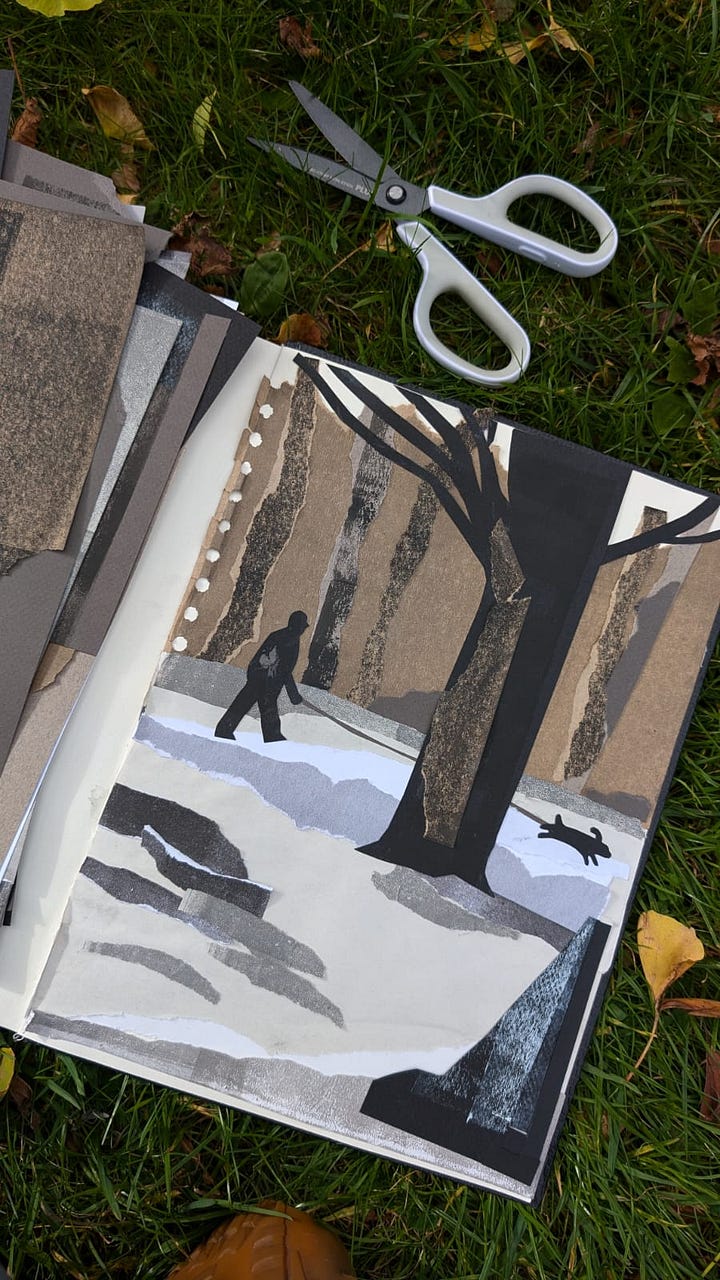
CLASS 5 - Mark Making with Charles Shearer
Charles was amazing. The minute he began the demo, the magician in him took over, and he nonchalantly made some fabulous scenes of art with a few strokes - using odd bit and bobs few would think of using to paint - feathers, reeds, kitchen sponges, textured rollers, cloth rags, etc.
The working location for the day was a cemetery - fitting, since we were only allowed to use black paint/ink/pencils/crayons/... We sat ourselves down amidst gravestones and painted/mark-made our lives to hell. This time around, I remembered to take photos of all the (dark) magic!
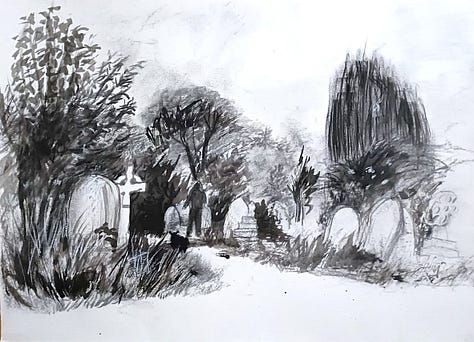

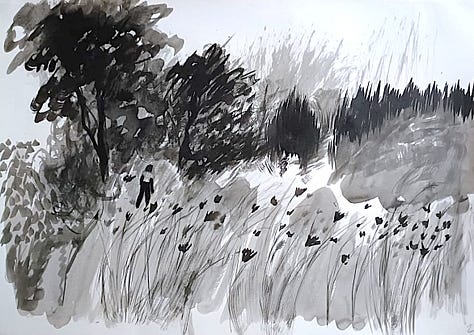
What I love the most about this course is the structured and systematic way that
we’re being introduced to various facets of drawing and get to layer the
knowledge/experiment of each on our sketches, one by one.
Making first a habit of sketching, and then getting to see the difference that each facet brings to it, is every time a revelation - building an appreciation of each gradually.
Did I say the same thing twice? Well, that’s how much I appreciate it! Storytelling is an art, and knowing the anatomy of its parts I think, is the secret to achieving greatness in it.
However do you think AI makes that knowledge obsolete? Will appreciate your views on this!


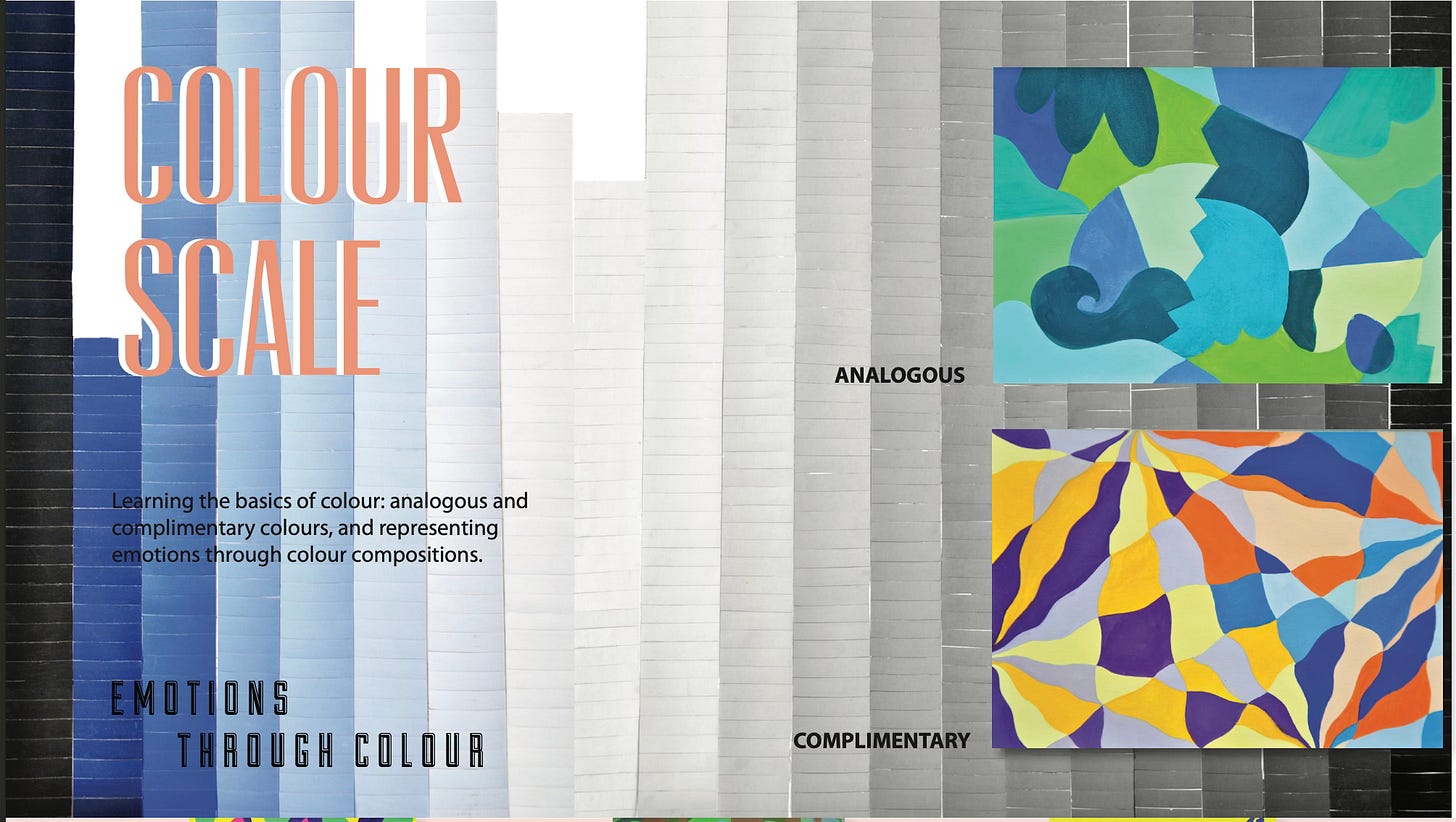


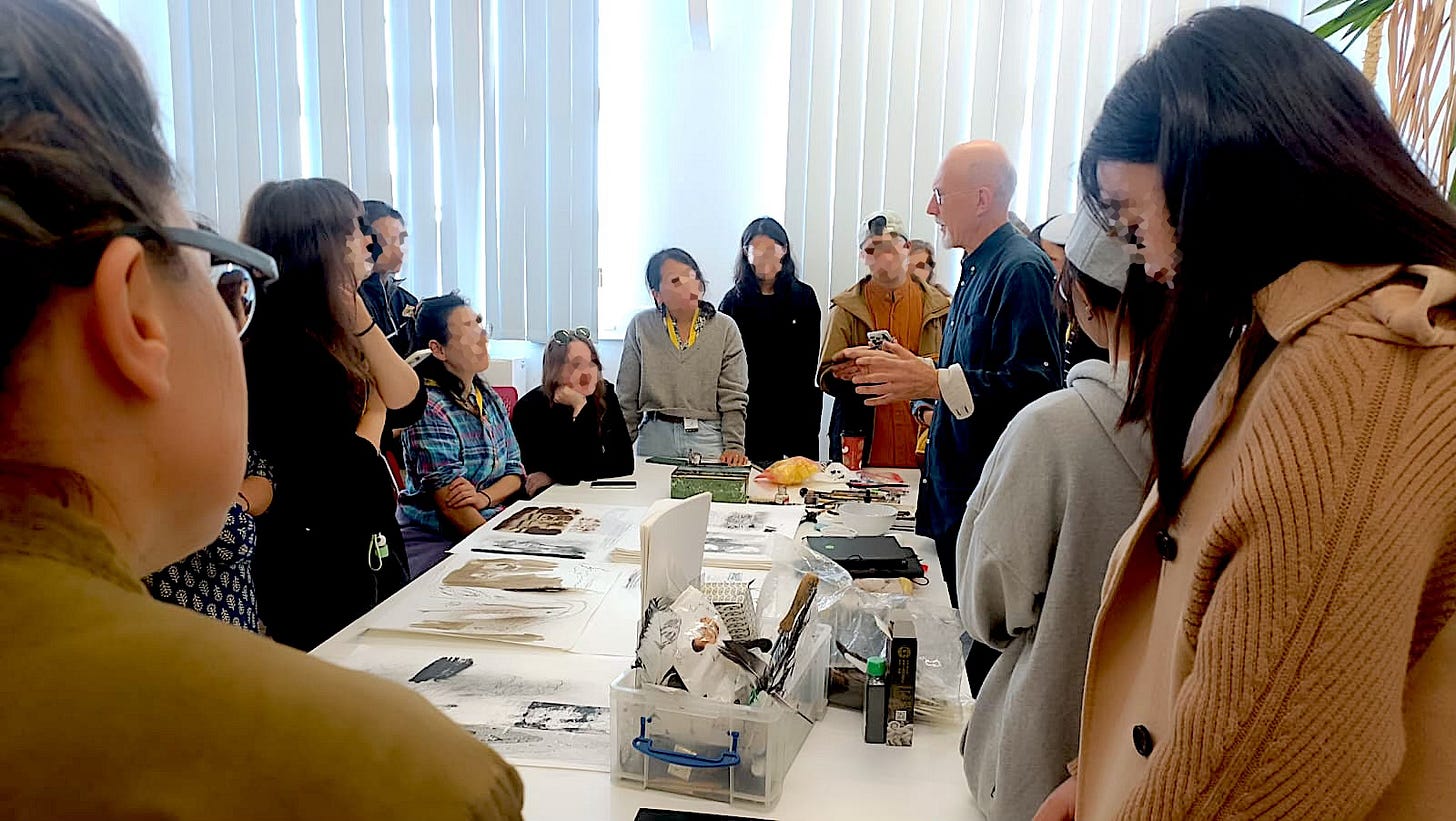
This is beautiful, Anant. As someone whose fingers refuse to work as soon as they hold a pen, I am so intrigued by all these intricacies. Maybe you can teach me a bit about sketching before you turn old and die (I will always be young). Keep sharing!
So well articulated AJ ❤️